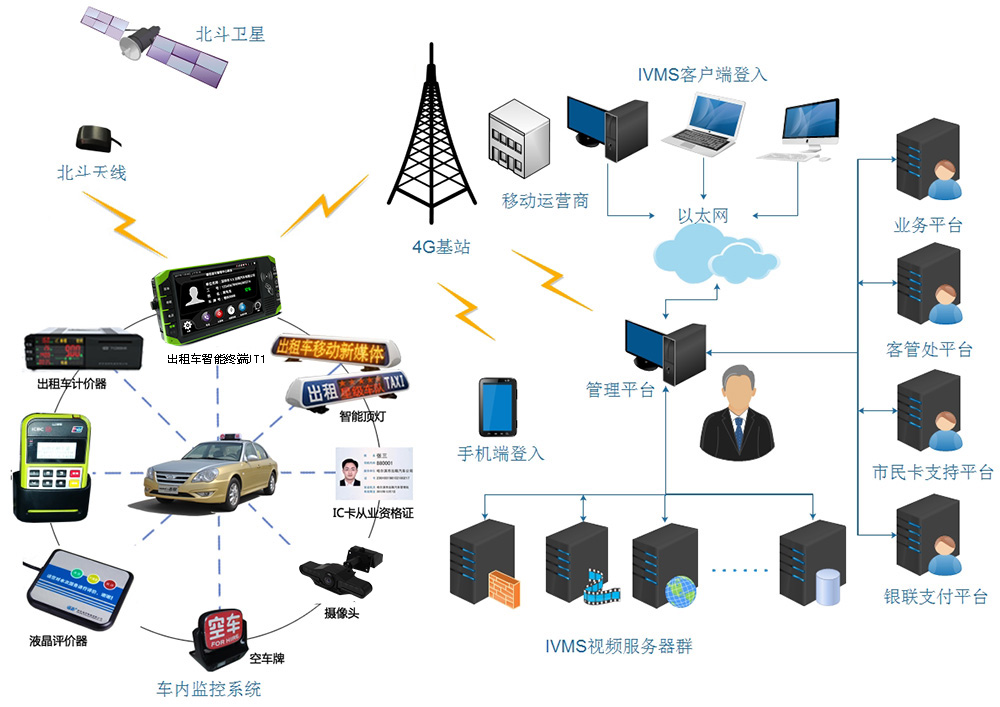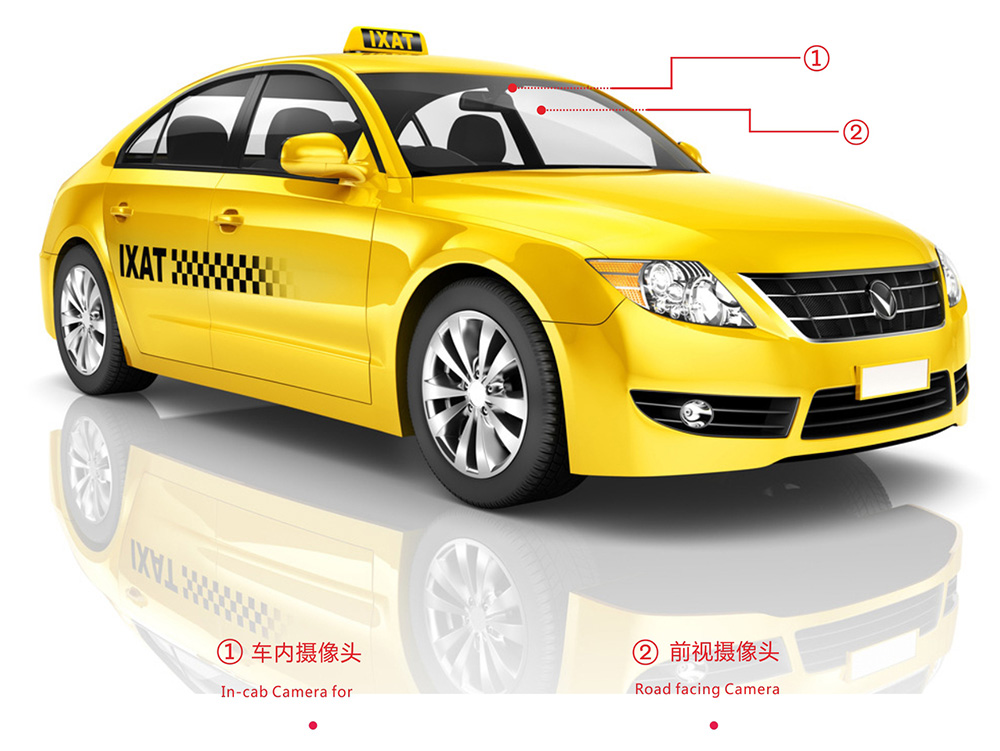
With the development of urban economy, social progress, and the improvement of people's living standards, taxis have become an important part of urban transportation. In recent years, the number of taxis in major cities has increased rapidly, which has caused urban traffic congestion to a certain extent, causing people to spend a lot of precious time on the roads and cars every day, leading to higher and higher requirements for taxi services by passengers, and more complaints. Come stronger. However, the taxi company’s management of the vehicles under its jurisdiction is relatively simple, and it is difficult to collect operational data. At the same time, a series of problems such as the driver's private transportation of passengers, high vacancy rate, poor real-time performance, and scattered scheduling have seriously affected the profits of taxi companies; in addition, in recent years There has been a significant increase in security cases such as taxi robbery, which also poses a serious threat to the personal safety and property of drivers.
In order to adapt to the continuous development of urban traffic and the improvement of social security, it is very necessary to establish a taxi monitoring and dispatching system with efficient, unified management, wide coverage and universality, and it is also the long-awaited urgency for taxi managers. need.
As the manager of a taxi company, do the following questions bother you during the operation and management of the taxi? Or does the taxi driver you hire complain to you about some of the following issues?
1) Taxi drivers do not need to use the meter to carry passengers privately, which will affect the company's profits;
2) It is difficult for taxi drivers to find passengers and the empty-load rate is high;
3) Difficulties in collecting operational data, unable to conduct performance appraisal of drivers;
4) The taxi is prone to encounter unexpected situations such as traffic jams during the passenger journey, and the time is wasted by not using the correct guidance;
5) Passengers wait for a long time by calling the bus, and passengers complain a lot;
6) The distribution of taxis is not controlled by the management platform, making real-time dispatching difficult;
7) The information of the management center is lagging behind, and when the taxi encounters dangerous situations such as robbery and traffic accidents, it cannot be properly resolved in time;
8) Illegal operations such as driving and making phone calls, driving for a long time, speeding, etc., have led to an increase in the probability of accidents;
9) In case of incidents such as passenger lost property disputes, robbery and other emergencies, it is impossible to provide evidence afterwards;
10) The taxi LED dynamic display advertising function urgently needs to be realized.
With years of experience in the research and development of on-board monitoring products, Tianyude actively responded to the market demand of the taxi on-board monitoring industry and launched a 3G/4G on-board intelligent monitoring system solution to meet the urgent needs of taxi company managers.

The 3G/4G vehicle intelligent monitoring system includes the front-end vehicle monitoring system, mobile communication network, and server monitoring center. Based on the design principles of advancement, practicability, scalability, reliability, safety, and ease of use; established with the tenet of systematization, flexibility, high efficiency, and stability.
A: Front-end vehicle monitoring system
The front-end on-board monitoring system is an important part of the whole plan. It collects audio and video data by installing cameras inside and outside the car to realize safe and no dead-angle monitoring; and uses GPS global satellite positioning system to realize real-time positioning of the vehicle; at the same time, it is connected with an on-board alarm switch (Such as: alarm button, brake, door sensor switch, etc.), digital walkie-talkie/fatigue driver/GPS navigation screen, LED advertising display, taximeter/evaluator and other auxiliary equipment, and through the vehicle MDVR host to monitor audio, video, GPS, The alarm data is encoded, stored and reported to the server on the 3G/4G wireless network, so as to realize the remote monitoring and management of the vehicle.
Camera installation location:
1) Front-view camera at the front of the car: the function of the driving recorder;
2) Front-row driver’s camera: standardize operation, anti-robbery alarm;
3) Rear passenger seat camera: no blind spot monitoring, lost property query;
4) Rear boot camera: luggage monitoring, lost objects checking;

B: Mobile communication network
Since the monitoring points of the front-end vehicle monitoring system are in a constantly moving environment, audio, video, GPS and alarm data can only be transmitted through the 3G/4G mobile network. At the same time, through the 3G/4G mobile network, remote management operations such as remote upgrade of equipment, modification of equipment parameters, remote power and fuel failure, and alarm information viewing can also be completed.
C: Server Monitoring Center
The server monitoring center is a remote monitoring and management center composed of IVMS server group, background management software and client software. It adopts a centralized and distributed network management architecture, which can realize remote real-time monitoring, recording, and capturing of multiple vehicles at the same time; Video search, download, analysis and playback; combined with GIS electronic map to view the distribution status of vehicles; query driving trajectory and playback; view alarm information, quickly locate the geographic location and live video of the alarm vehicle. At the same time, the digital walkie-talkie can realize the intercom between the platform and single/multiple vehicles (or external fatigue driver/GPS navigation screen according to demand); cooperate with the taxi advertising screen to publish advertising information. The WiFi automatic download server is configured in the parking lot where the vehicles are concentrated, and the surveillance video files can be automatically downloaded to the designated server for storage.
Managers of the server monitoring center only need to authorize the corresponding vehicles through the server background software, and generate the corresponding account numbers and passwords to perform unified management. At the same time, other accounts can also be created through the web client for other personnel to view and manage in real time on smart phones and computers.

Shenzhen Tianyude Technology Co., Ltd.
Address: Room 301, Building F, Zhugu, Creative Park, Yintian 331, Xixiang, Baoan District, Shenzhen
Contact: Mr. Deng 13683804772
Technical support: Mr. Lei 15019453604
Phone: 0755-29470519
Fax: 0755-29185700
URL:equestrianbahrain.com
